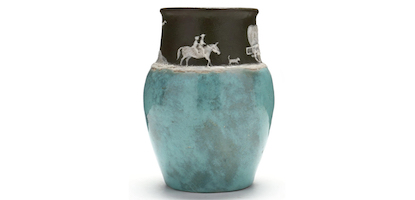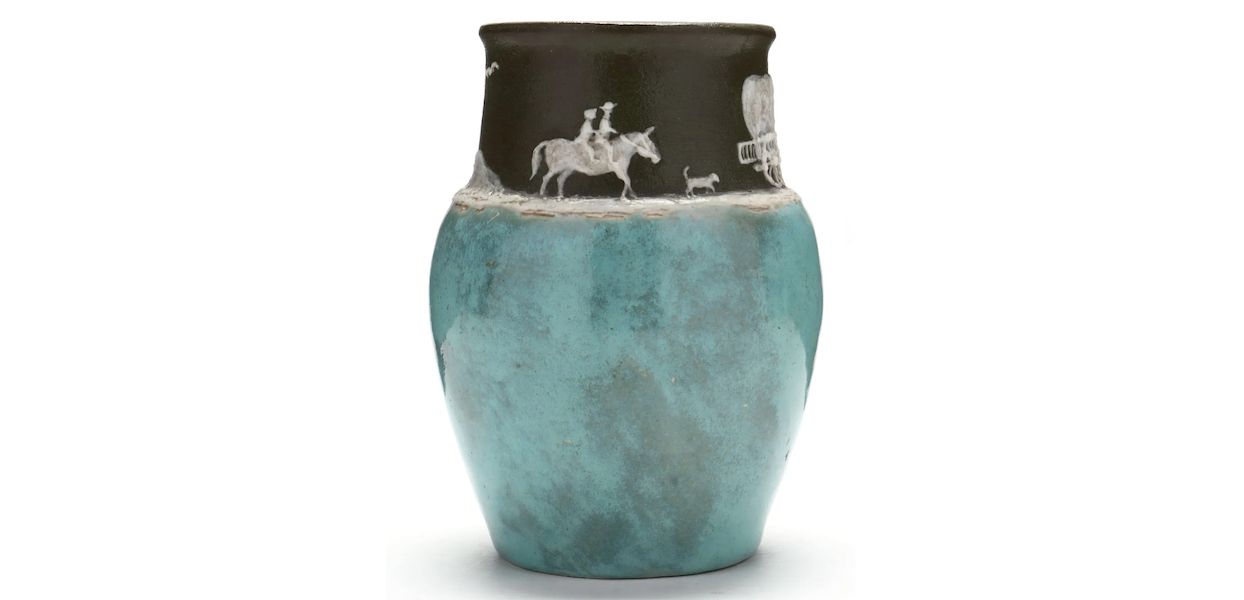
NEW YORK — Walter Benjamin Stephen (1876-1961) first proved himself in the pottery industry with Nonconnah Pottery, which he and his parents opened near Memphis, Tenn., in 1904 and made fine slip-decorated vessels that typically had floral decoration on simple matte backgrounds. The pottery was named for a creek that wound around Memphis and is an Native American word meaning “long stream.” After his parents died in 1910, Stephen searched the country for a region with clay and material that would be better for pottery-making. He decided on North Carolina, near the Pisgah Forest, after meeting C.P. Ryman from Skyland, N.C., with whom he formed a partnership to set up a kiln and studio in the state. Both believed the mountain feldspar and the clays in this region, which came in a variety of colors, would make for superior pottery.
Today, western North Carolina has a fine pottery-making tradition, but Stephen was the first art potter to set up shop. “Buncombe County in the Blue Ridge Mountains became an important center of pottery production in the first decades of the twentieth century, thanks especially to Walter Benjamin Stephen and Oscar Bachelder,” according to the Mint Museum in Charlotte, N.C., which has about 30 of Stephen’s works in its permanent collection.
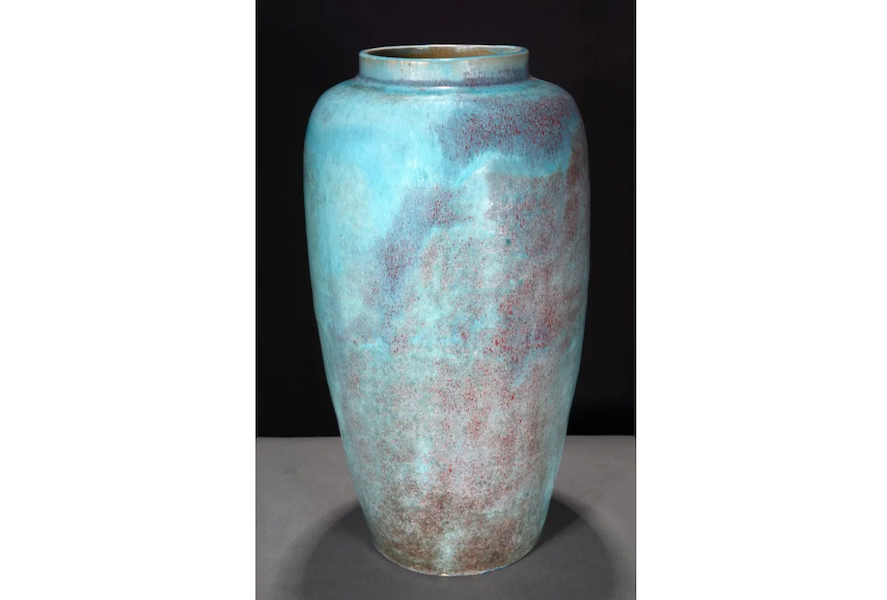
The two men ran a pottery in Skyland for a few years until they parted ways amid the economic woes caused by World War I. Stephen took a break from potting and instead worked in an aluminum plant about 55 miles east of Charlotte. He came back to the area in 1926 to open his most ambitious pottery, Pisgah Forest Pottery, in Arden. He began experimenting with Asian-inspired forms and glazes and helped make mainstream the use of crystalline glazes in the South. Among the many fine pieces of his showing Asian influences is a museum-quality floor vase painted turquoise blue with red highlights that brought $2,300 plus the buyer’s premium at Slotin Folk Art in February 2022.
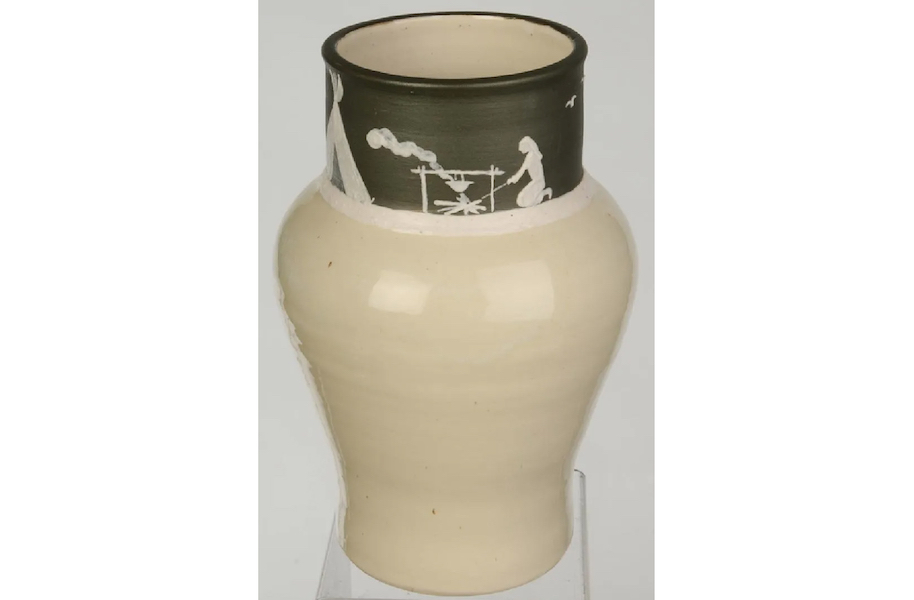
Stephen was perhaps best known for his cameo vases and vessels featuring a turquoise crackle glaze or neutral-colored glazes that often had decoration in relief. He produced many vases as well as creamers, pitchers and platters. Given that his early childhood years were spent in Nebraska before his family settled in Tennessee, Stephen favored Western motifs such as Native American scenes, covered wagons, cabins and images of rural life. A 1930s cream-glazed cameo vase, decorated with various scenes of a buffalo hunt, made $2,000 plus the buyer’s premium at Brunk Auctions in July 2018. The 9 1⁄2in-tall vase is further identified by the potter, who inscribed his last name at the shoulder.
One of his most popular Western designs that he painted freehand were his covered wagon scenes, also known collectively as Westward Ho pieces. A cameo vase decorated in a color scheme of a matte blue-green with chocolate brown features images of a pair of oxen pulling a covered wagon, a couple on horseback and a landscape showing a vast sky and mountains. The vase earned $1,000 plus the buyer’s premium at Leland Little in August 2021.
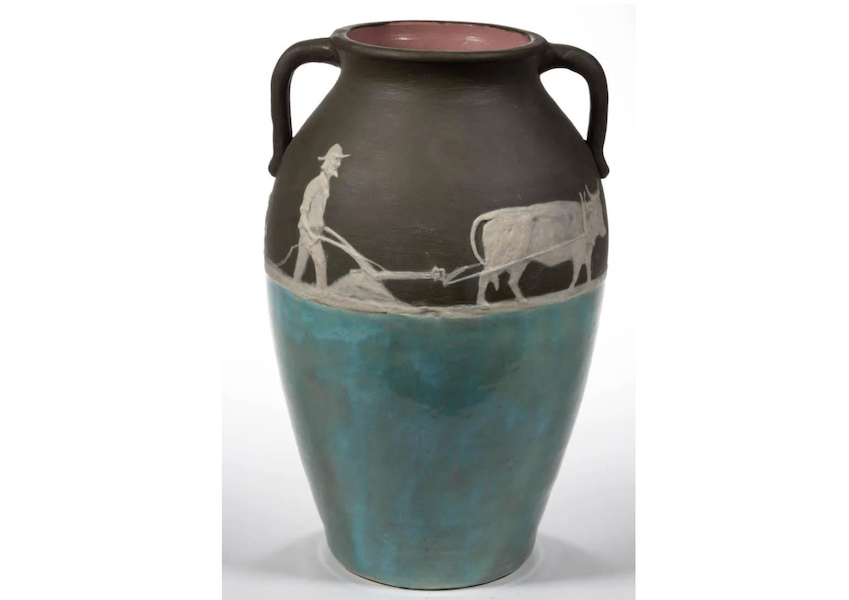
This brown-blue color scheme must have been popular with buyers as Stephen used it often. A circa-1930 cameo vase with a farming scene is very similar to the Westward Ho vase except that it has two handles. This 14 ⅛in piece went for $1,700 plus the buyer’s premium in April 2020 at Jeffrey S. Evans & Associates. The pate-sur-pate relief images, which were not molded but painstakingly built up by painting multiple layers, depict country life: a child riding a stick horse, a farmer watching an oxen-pulled plow and a woman wearing a bonnet, who sows seeds in front of a cabin.
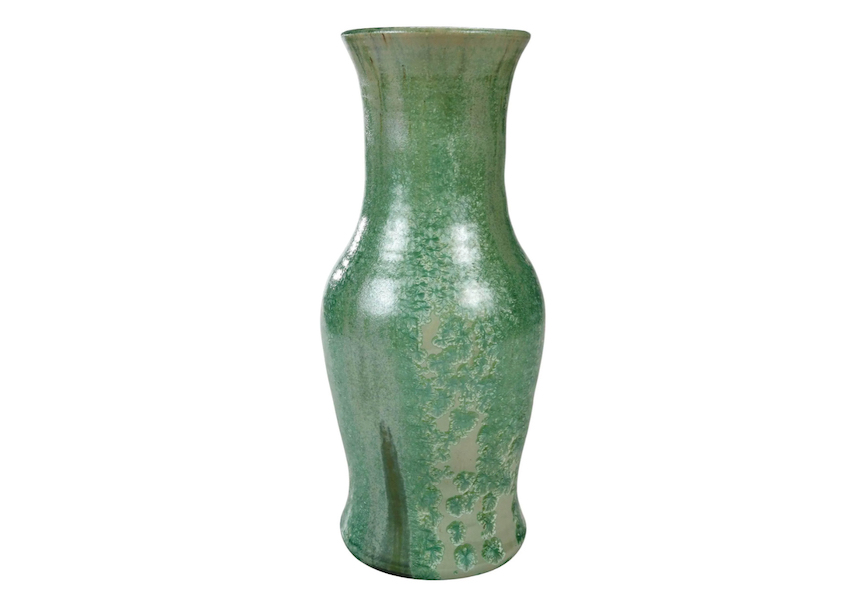
While Stephen’s output was limited as he hand-threw his pots, his crystalline glaze vessels are the most scarce of all. Achieving the right temperature in a wood- or gas-fired kiln to prompt crystals to grow on the paint was distinctly challenging, and only became easier to do after electric kilns were invented. A large circa-1930-35 crystalline vase, measuring 16¼in, was a good buy at $1,200 plus the buyer’s premium at Brunk Auctions in July 2022. This piece was nearly triple the size of the vase forms Stephen typically produced, and the crystals on the body of the vase are green, not white. Appraiser-auctioneer David Rago assessed this very vase in a 2021 episode of Antiques Roadshow. In it, Rago noted that most of Stephen’s work was a bit expensive for people who lived nearby, so he catered to a tourist market. “So that’s why Pisgah Pottery turns up all over the country,” he said during the segment.
Despite the craftsmanship Stephen put into his vases and vessels, Pisgah Forest Pottery is nonetheless affordable. Most examples, even rare ones, sell for less than a few thousand dollars. This Arts and Crafts potter is well-represented in several Southern museums. While not a household name outside the South, he and his pottery have attracted a loyal and substantial following.


